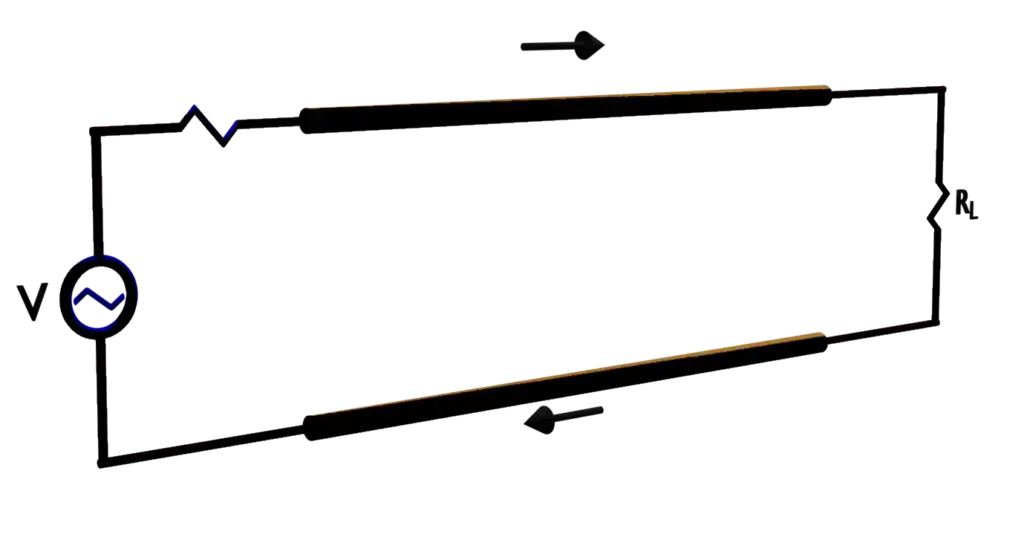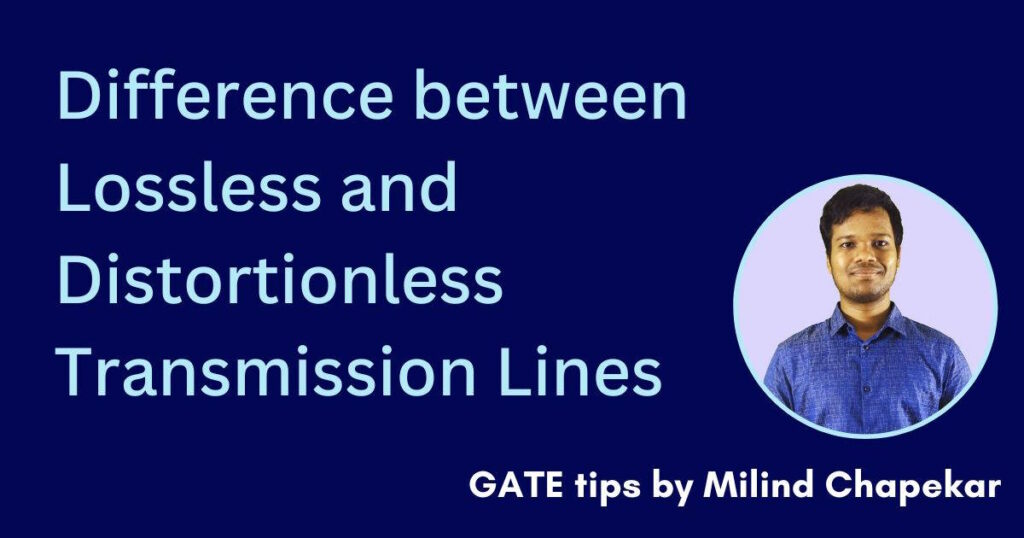In the sphere of electrical power transmission and communication, the understanding of transmission lines is fundamental for ensuring efficient and reliable signal propagation.
Two important concepts that play a pivotal role in transmission line theory are losslessness and distortionlessness. While these terms might seem similar, they encompass distinct characteristics that significantly impact the behavior of the transmitted signals.
Lossless transmission lines are renowned for their ability to transmit signals without any power loss.
On the other hand, distortionless transmission lines are distinct in their capacity to maintain the shape of a signal without introducing any distortion.
Overview of Transmission line
Transmission lines carry electric energy from one point to another in an electric power system. Transmission lines carry electromagnetic energy over the long distance.
Power Transmission lines are used to connect power stations and substations and for connections between substations, for efficiently transmitting a large amount of electricity at high voltage without loss.
A transmission line is used to connect the transmitter and the antenna. The transmission line has a single purpose for both the transmitter and the antenna. This purpose is to transfer the energy output of the transmitter to the antenna with the least possible power loss.
Transmission line is used in high-frequency circuit design.
Lossless Transmission Line and its Characteristics
The transmission line in which there is no power loss is called as lossless transmission lines.
Let us understand this with the help of a diagram.
Consider two transmission lines having dielectric medium. The high-frequency voltage is applied at the source end.

We know that, current and voltage waves travels from source end to the load end.
For efficient transmission lines, there should be no power loss. The power loss should be zero. So, the transmission lines where power loss is zero is called as Lossless Transmission Lines.
There is no power loss in the transmission line while transferring electromagnetic energy from source end to load end.
You may have seen that , power loss is zero when resistance or conductance is zero.
So, in lossless line R=0, G=0
where R= Resistance per unit length
g= conductance per unit length
We know that there are four primary parameters of transmission line, R for resistance, G- Conductance, L- Inductance and C- Capacitance. All these primary parameters are defined by per unit length.
So, for the lossless transmission line, R=0 and G=0.
In these condition, the transmission line will behave as lossless transmission line.
Characteristics of Lossless Transmission line
I) The resistance and conductance is zero in the lossless transmission line.
ii) There is no capacitance or inductance. Ideal lossless transmission lines do not have any capacitance or inductance per unit length
iii) There is perfect reflection and transmission in Lossless Transmission line.
iv) The lossless transmission line is assumed to have a constant characteristic impedance
Distortionless Lines and its Characteristics
In simple terms, the transmission line where there is no distortion is called as Distortionless lines.
Let us first understand what is mean by distortion.
Distortion means the presence of unwanted or abnormal signals or frequencies in the electrical power waveform.
The transmission line is widely used in communication systems for sending signals from sending end to the receiving end over the long distance.
There are mainly two types of distortion that takes place in the transmission line while sending signals.
i) Frequency distortion
ii) Delay Distortion
You may have heard that the message signals carry frequency with it . These frequencies also transmit in the transmission line while sending any message signal. Different frequency of the message signal gets attenuated by different attenuation.
This type of distortion is called as frequency distortion.
There is again one type of distortion called as Delay distortion.
Message signal consists of band of frequencies and these propagate in the transmission line from sending end to the receiving end.
Each frequency travels with a different speed. Due to this there is delay in the receiving end. Such kind of distortion is called as Delay distortion.
When a message signal is propagated in the transmission line these two distortions are observed dominantly.
Due to these distortions, it is not easy to retrieve the signal at the receiving end. Generally, any kind of distortions are not desirable as these may affect the efficiency of the transmission line.
The transmission line that is constructed with proper precautions of distortions, that type of line is called as Distortionless line.
The Distortionless transmission line is constructed by taking the ratio
\frac{R}{L}=\frac{G}{C}
All these are primary constant of transmission lines.
When the transmission lines are constructed with this precaution, then that type of line is called as Distortionless line.
Characteristics of Distortionless Transmission Line.
i) Similar to a lossless transmission line, a distortionless transmission line is assumed to have zero resistance along its length. This implies that no power is dissipated as heat due to resistance in the conductors.
ii) A distortionless transmission line also assumes zero conductance, meaning there is no leakage of current through the insulation or dielectric material.
iii) A distortionless transmission line considers the finite propagation delay of signals traveling along the line. This delay is caused by the finite speed at which the signals propagate.
iv) In a distortionless transmission line there is frequency-dependent phase velocity. The phase velocity depends on the transmission line parameters such as inductance, capacitance, and characteristic impedance
Difference between Lossless and Distortionless Transmission Lines.
Summarizing all the information we get through this article, we can differentiate between lossless and distortionless transmission lines.
| Lossless Transmission Line | Distortionless Transmission Line |
| There is no Power loss in the transmission line. | There is no Distortion in the transmission line. |
| For no power loss, R=0, G=0 | For no distortion, \frac{R}{L}=\frac{G}{C} |
| This is an Ideal Transmission Line. | We see distortion in the transmission line, |
Hope so, this article have explained the difference between Lossless and Distortionless Transmission lines.
Do not forget to check our Awesome GATE courses.


